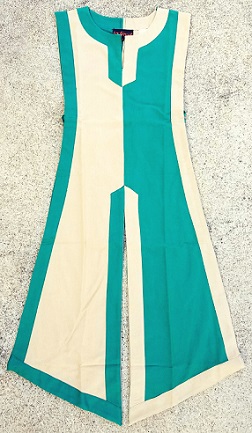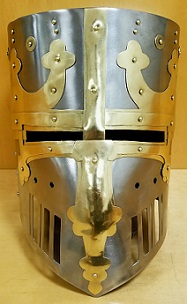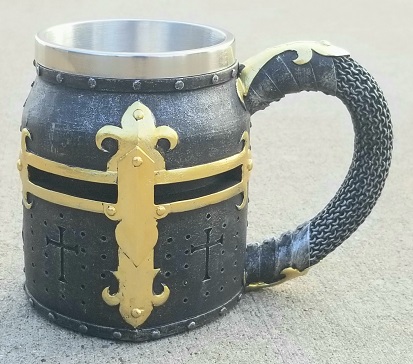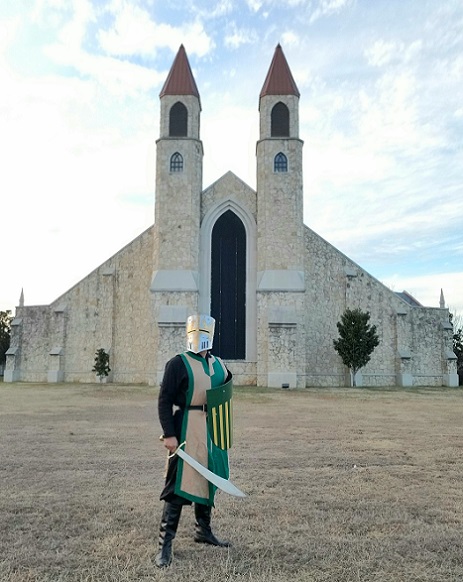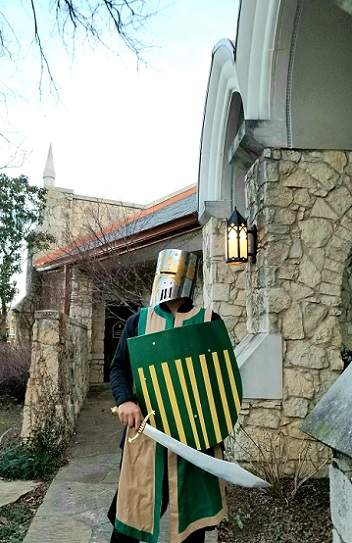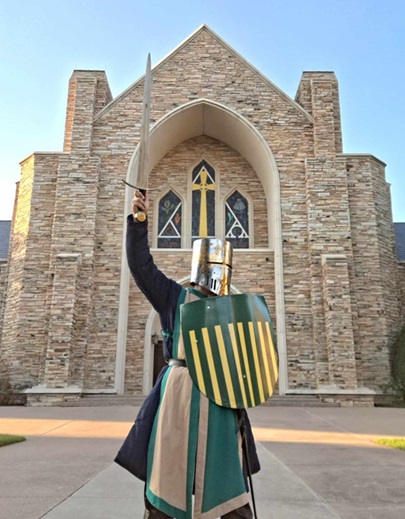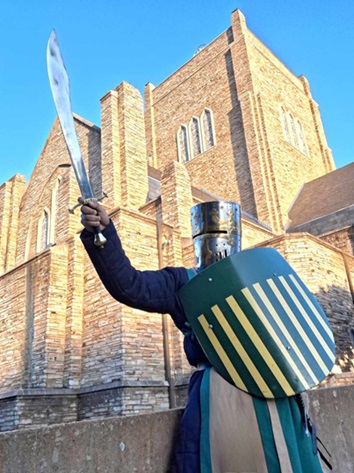Subject: knight
Culture: Plantagenet English
Setting: Welsh, Scottish wars, Britain 1255-1328
Context (Event Photos, Primary Sources, Secondary Sources, Field Notes)
* Gravett 2020 p21-22
"Looking at the knights of the 13th century, the forces of English kings and magnates were made up from several elements. Household 'knights' formed the core of fighting men, a group made up of bannerets (knights who led a troop in war, named for their square banner), knights and squires directly serving their lord or king, whose numbers could be augmented by several means. The old idea of military service as a feudal obligation, though still alive, was diminishing in importance, increasingly being supplemented or replaced by service in return for pay. The idea of using wages was not new, but the extent to which this method would be employed, and the idea of military contracts that also developed, was different. In contrast to this new type of military-financial arrangement we also still find magnates who followed the king for nothing but honour and sometimes a desire to avenge themselves on their enemies.
"There were several ways a knight could join a retinue, the usual avenues being as a family member, as a household knight, or as a military tenant. Kinsmen provided an obvious source of warriors for a lord. In 1297, for the Flanders and Falkirk campaigns, Aymer de Valence contracted with Thomas and Maurice Berkeley for knights and troopers for a fixed fee in peace, to serve at the usual wages in war, themselves serving as bannerets with two squires each, the knights with one each besides troopers."
Helmet
* Bennett 1998 p132
"great helm large, cylindrical protective head covering made of plate. Properly called the 'helm' or 'heaume', the first great helms appeared in Europe in the early 13th century. They extended the current flat-topped helmet by the addition of a face defence, pierced at the front with sights and breaths, and then a neck defence, with all parts being solidly riveted together.
"These early helms were worn over arming caps and mail coifs. By the late 13th century the top had become a truncated dome, though some round-topped helms were also designed."
* Rothero 1989 p20
"During the second half of the 13th century helmets went through a period of experimentation, eventually arriving at two distinct styles: the chapelle-de-fer or 'war hat', and the 'great helm'. The cylindrical 'great helm' covered the whole head, sometimes curving under the chin to protect the throat. The slits for the eyes were strengthened by bars of steel and the lower section was pierced by patterns of small holes to provide ventilation.
Armor
* Gravett 2020 p59
"The commonest body armour of the 13th-century knight was mail, consisting of interlinked iron rings made up into garments. Despite the amount of mail that was undoubtedly in use, little has survived in any quantity dating from before the late 14th or early 15th centuries and none of that which does survive is of English manufacture. For the most part we are thrown back on manuscript illustrations and sculpted figures to reconstruct the knight of the period."
* Rothero 1989 p20
"Throughout the 13th century the wealthy mounted knights still relied on mail as their main form of body defence, though other forms, such as coats of metal plates or various padded garments, were also in use. The mail hauberk, now improved over that shown in the Bayeaux Tapestry, had tight-fitting sleeves and mittens of mail. Over his head the knight wore a separate coif of mail, often laced at the side or rear to hold it in position. The sword was slung in a convenient position across his body from a complicated waist belt. Over the mail went a surcoat; and a large shield hung from the shoulder, bearing the coat of arms.
Lance
*
"
Sword
* Gravett 2020 p104-105
"The prized weapon of the knight was always the sword. In the early years of the 13th century, the sword was essentially a cutting weapon, divided into five major types. Some blades had straight, razor-sharp edges running almost parallel to a sharp point, with a fuller (or channel) down the centre of each side of the blade, to lighten and strengthen it. Another form was more tapered, the fuller running perhaps three-quarters of the way down; this would become the commonest form of sword until the thirst quarter of the 13th century, and some were large specimens.
"In about 1240 a new type of sword appeared, broad-bladed, often widening slightly towards the grip, which was often about 6in. (16.25cm) long, though narrower blades and shorter grips were also seen in the second half of the century. The fuller usually reached about halfway down the blade. Larger versions of this form had blades from about 37 to 40in. (94-104cm) in length, the grip rising to perhaps 9in. (23cm). These ... were great swords or swords of war, also later known as bastard or hand-and-a-half swords. It may be that the gradual increase in solid body armour and limb-defences was the reason for the development of a short, wide-bladed slashing sword that nevertheless tapered to a point. The fuller on these ran about halfway, and it always seems to be provided with some form of wheel pommel at the end of a usually short grip. In about 1280 a strongly tapered acutely pointed sword of flattened diamond section made its appearance."
* Oakeshott 1960 p210
"Type XIV is very different, tending to be quite short, with a broad, flat tapering blade fullered in its upper half. Its cross is generally long, slender and curved, its pommel of 'wheel' form but very flat and wide. There are not very many remaining specimens, but in its period -- from about 1280-1320 -- there are perhaps more sculptured and pictoral examples than of any other type. I know of no actual sword which can give a dating point by the circumstances of its finding or by arms or associations, so it can only be dated by representations of it. To begin with, perhaps eight out of ten English military effigies of c.1290-1330 have swords of this type .... Then again, nearly all the effigies of Alsace and Lorraine and the Rhineland dating between 1300 and 1330 have this kind of sword. ...
Shield
* Norman/Pottinger 1979 p65
"The knightly shield was now usually smaller and shaped like the bottom of an electric iron and was sometimes slightly curved round the user's body to give greater protection."
* Edge/Paddock 1988 p83
"By the 1270s the shield had assumed the shape known today as the 'heater', because of its resemblance to the base of a clothes iron. It was in general of moderate size and very slightly curved to the body. It was made of thin wood, usually with an applied layer of canvas, over which was laid a layer of leather. The leather was either painted or decorated with applied moulded leather to represent the knight's coat of arms."
* Oakeshott 1999 p78-79
"The earlier form of the knightly shield is aptly described as 'kite shaped,' but the later smaller ones still tend to be called after objects no longer recognizable -- for instance, 'heater' shaped. I have never come across a heater shaped like a shield, and I don't expect many readers have either. It is far better to say that the shield of the thirteenth century was shield shaped: the word itself has come to be used as an adjective denoting the shape. A thing to remember about the difference between real shields of the thirteenth and fourteenth centuries and modern trophy shields or blazerbadges is that the upper edge of the earlier ones never had two concave dips coming to a point in the middle."
* Gravett 2020 p79-80
"A shield was carried since this provided a solid defence as opposed to the flexible defence of the mail coat. Made from wooden planks and faced with leather or parchment, most were probably lined with parchment, cloth or leather as well. No English shield from this period survives, and Continental examples come from churches, perhaps being specifically made for this purpose, so it is not certain whether coverings such as gesso and moulding would usually have been used on war shields. The wood tends to be about 3/5in. (1.5cm) thick. There are usually three brases or enarmes (carrying straps) riveted through to the front; illustrations sometimes show buckles to adjust their length. In order to prevent bruising to the forearm a pad was nailed between the straps. In addition, a guige strap allowed the shield to hang from the neck (or with only the forearm through the brases) in the charge or to prevent loss in battle, or allowed the shield to be strapped to the back or hung up when not in use. Rarely a buckler, a small circular wooden shield with a central metal boss over a hand grip, may have been used."
* Bennett 1998 p146
"heater shield shield with a straight or slightly curved top and two curved sides meeting in a point at the bottom, in use in western Europe during the 11th and 12th centuries. It was strapped to the forearm or over the shoulder and covered from shoulder to mid-thigh."
Costume
* Gravett 2020 p75
"The surcoat was a cloth garment worn over armour. It appears to have been introduced in the second quarter of the 12th century and was increasingly popular by the early 13th century, though even towards mid-century by no means all knights wore one. The length varied from above the knee down to the ankles, and the skirts were split front and rear almost up to the waist for ease in riding. Its main purpose is not clear, suggestions varying from keeping the armour dry or out of sunlight, to copying Muslim fashion or for displaying heraldry. The latter is the least persuasive: the surcoat was frequently left in a single colour which appears to bear little relation to a family's coat of arms. As for other aspects of their design, most appear to have been lined in a contrasting colour. They were usually secured at the waist by a plaited cord or decorative belt, which also helped to hitch up the mail beneath and ease the weight on the shoulders. A few surcoats may have been lined over the chest with plates."
Falchion
* Gravett 2020 p105
"An unusual form of sword that appeared in the 13th century was the falchion, in shape not unlike a butcher's cleaver. Instead of being designed to balance as close to the hand as possible, it had a short blade that was wider and heavier towards the point, to produce a powerful cutting weapon."
* Stone 1934 p
"
Cup
*
"
